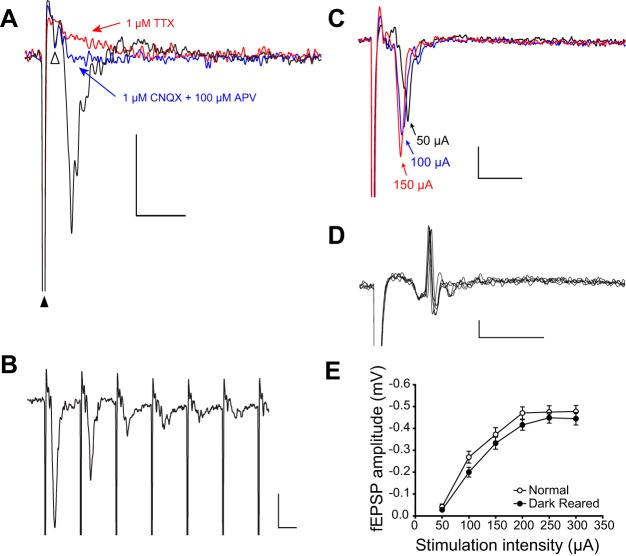Fig. 1.
The evoked field potential in superior colliculus (SC) is an excitatory postsynaptic potential (fEPSP). A: the postsynaptic signal is excitatory, because blocking α-amino-3-hydroxy-5-methyl-4-isoxazolepropionic acid (AMPA) and N-methyl-D-aspartate (NMDA)-type glutamate receptors with 6-cyano-7-nitroquinoxaline-2,3-dione (CNQX) and dl-2-amino-5-phosphonovaleric (APV) acid completely blocked the field potential (blue trace; stimulus artifact marked with black triangle). Under glutamate receptor blockade, a small presynaptic potential remained (open triangle), which was blocked by tetrodotoxin (TTX) (red trace). B: decreased responses during rapid (100 Hz) stimulation suggest a postsynaptic signal. C: monotonically decreasing latency at increasing stimulation intensities also suggests a postsynaptic signal. D: action potentials are occasionally observed that coincide with the peak of the fEPSP, indicating that it is likely a combination of current sources, including postsynaptic dendrites and somata. Several overlain traces show that the spike occurs at a consistent latency. Reducing stimulus intensity caused the spike to disappear. E: current evoked fEPSP responses were not significantly affected by visual experience. Scale bars in A–D: 0.2 mV, 5 ms.

